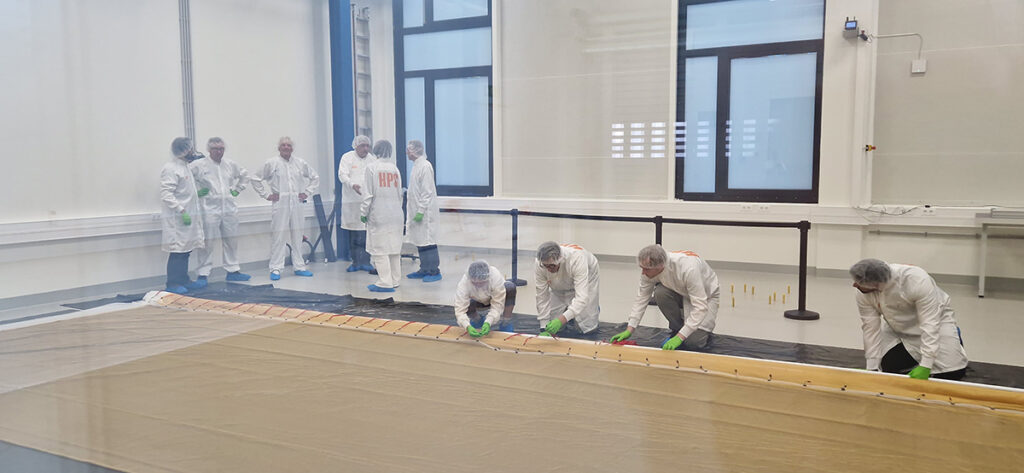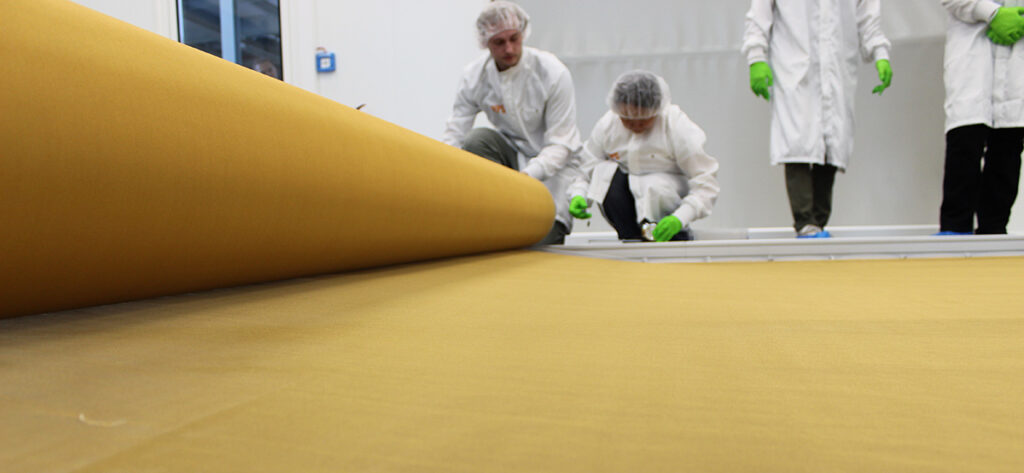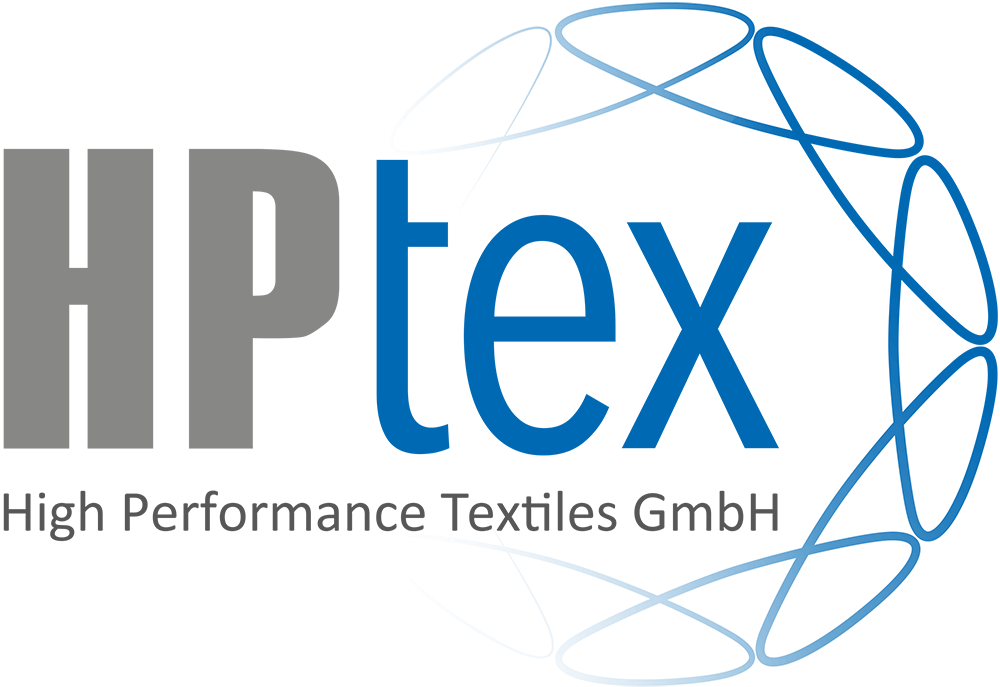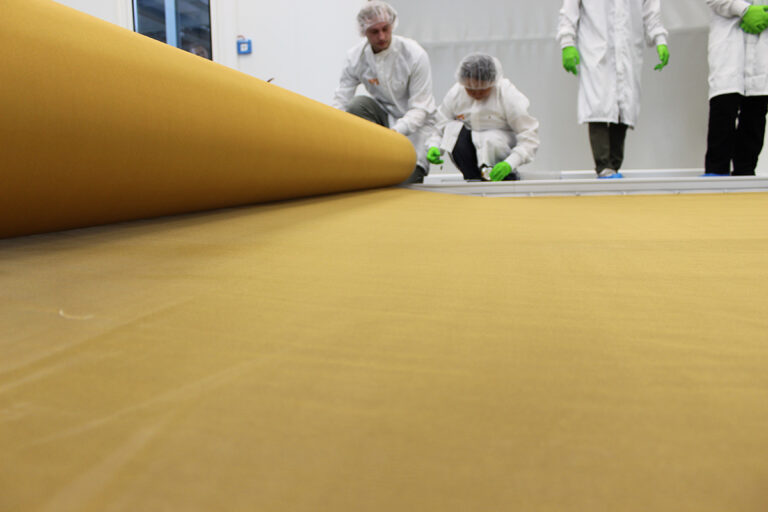Inspection of the HPtex-Mesh for ESA’s Next-Gen Earth Observation Satellite Successfully Completed
After months of precision manufacturing at HPtex GmbH, a specialist in space-grade textiles based in Upper Franconia, Germany, a major milestone was reached on June 24, 2025, for the European space mission CIMR (Copernicus Imaging Microwave Radiometer). A large-scale inspection of the mission’s deployable antenna mesh took place in the newly commissioned cleanroom assembly hall at HPS headquarters in southern Munich.
At the heart of the event: the newly developed Universal Space Mesh USM TUCH 32 – an ultra-fine metallic mesh tailored specifically for CIMR’s demanding Ka-band requirements. Available in two variants (20 µm and 25 µm wire diameters), this mesh features E32 needle fineness (32 needles per inch), an exceptionally low mass of approximately 40 g/m², and dimensions of 10.2 x 9.5 meters – making it one of the largest high-performance space meshes of its kind worldwide. The individual mesh stripes were sewn by HPtex with its reengineered sewing machine in a now fully automated and touchless sewing process. Thanks to the large knitting width (over 4 m) of the in-house high-performance knitting machines only two seams have been necessary to assembly this large mesh.
The mesh itself is woven using high-purity wire from LUMA WIRE TEC in Sweden, a long-standing partner of HPS and HPtex.
The inspection was attended by a top-tier delegation, including representatives from:
- ESA (end customer),
- Thales Alenia Space – Italy (TAS-IT) (direct customer of HPS),
- LSS (subcontractor and partner for the 8-meter Deployable Reflector Assembly DRA),
- HPtex (CEO and key staff at the machines),
- and HPS (prime for the Large Deployable Reflector Subsystem, responsible for the Deployable Arm Assembly DAA and for mesh testing and characterization).


This milestone marks the culmination of four years of dedicated development under the CIMR program, building on six prior years of preparatory research and prototyping. Over the course of the project, hundreds of mechanical tension tests were conducted—primarily using HPS’s proprietary testing setup, which has been steadily refined over the years. In parallel, hundreds of RF tests were carried out, culminating at ESA/ESTEC, using their cutting-edge, high-precision RF characterization facility, to fine-tune the mesh’s electromagnetic properties. Cyril Mangenot, former RF specialist at ESA/ESTEC and one of the earliest supporters of a European LDRS solution on the agency side, supported the mesh development for HPS with all his experience.
The next step: mating the mesh with the Engineering Qualification Model (EQM) of the cable network provided by LSS. CIMR is currently in Phase C/D, with the Critical Design Review (CDR) scheduled for the first half of 2026.
This achievement exemplifies the strength of European collaboration in space technology. From materials science to RF performance, every aspect of this “dream team” effort—including ESA, TAS-IT, HPS, HPtex, LSS, and others—has contributed to an outstanding result.
HPtex is now the central European source for supplying high-performance space meshes to customers across the globe – from the Americas to Asia – and demonstrates once again that world-class aerospace innovation is alive and thriving in Bavaria.

